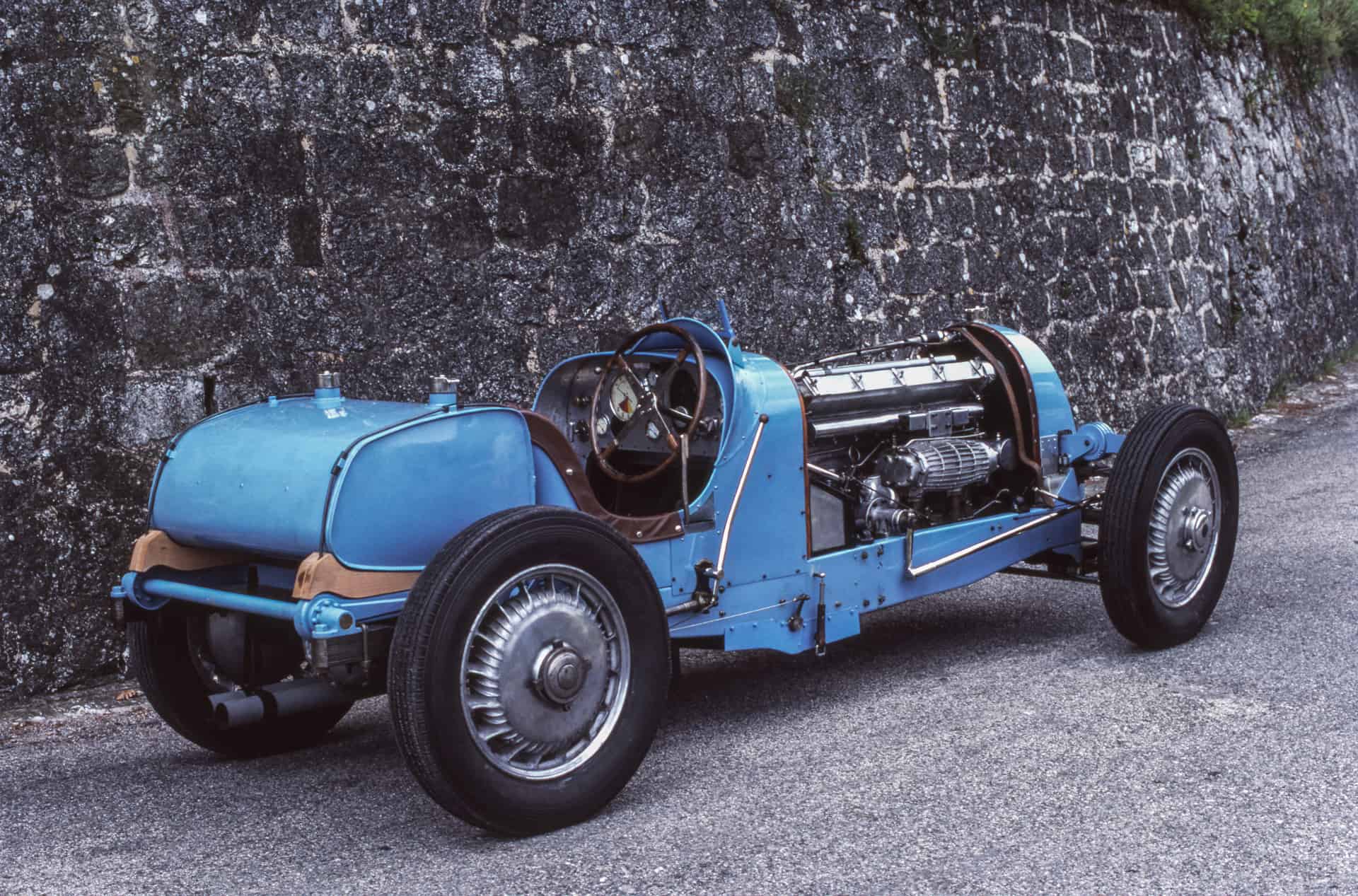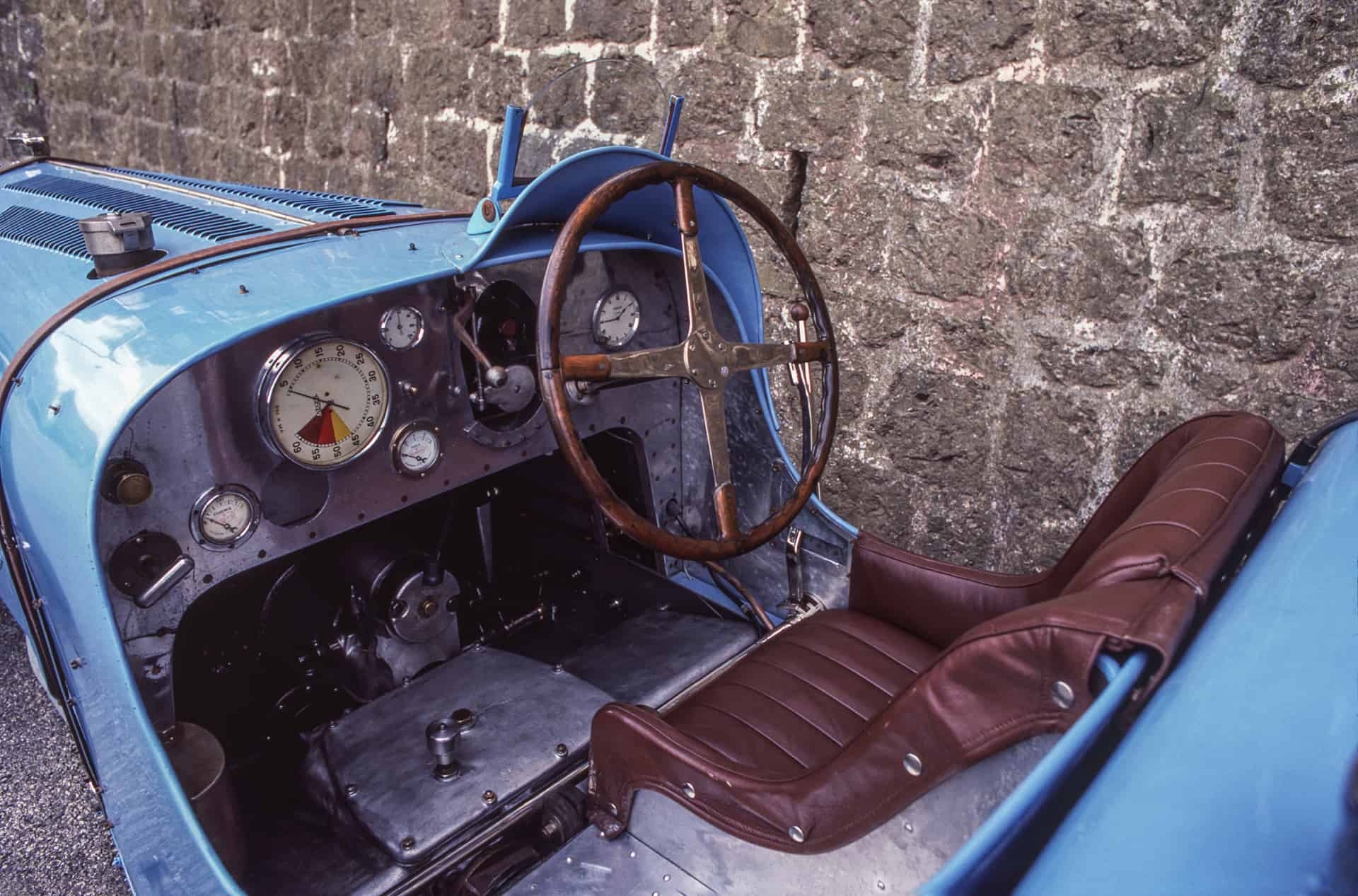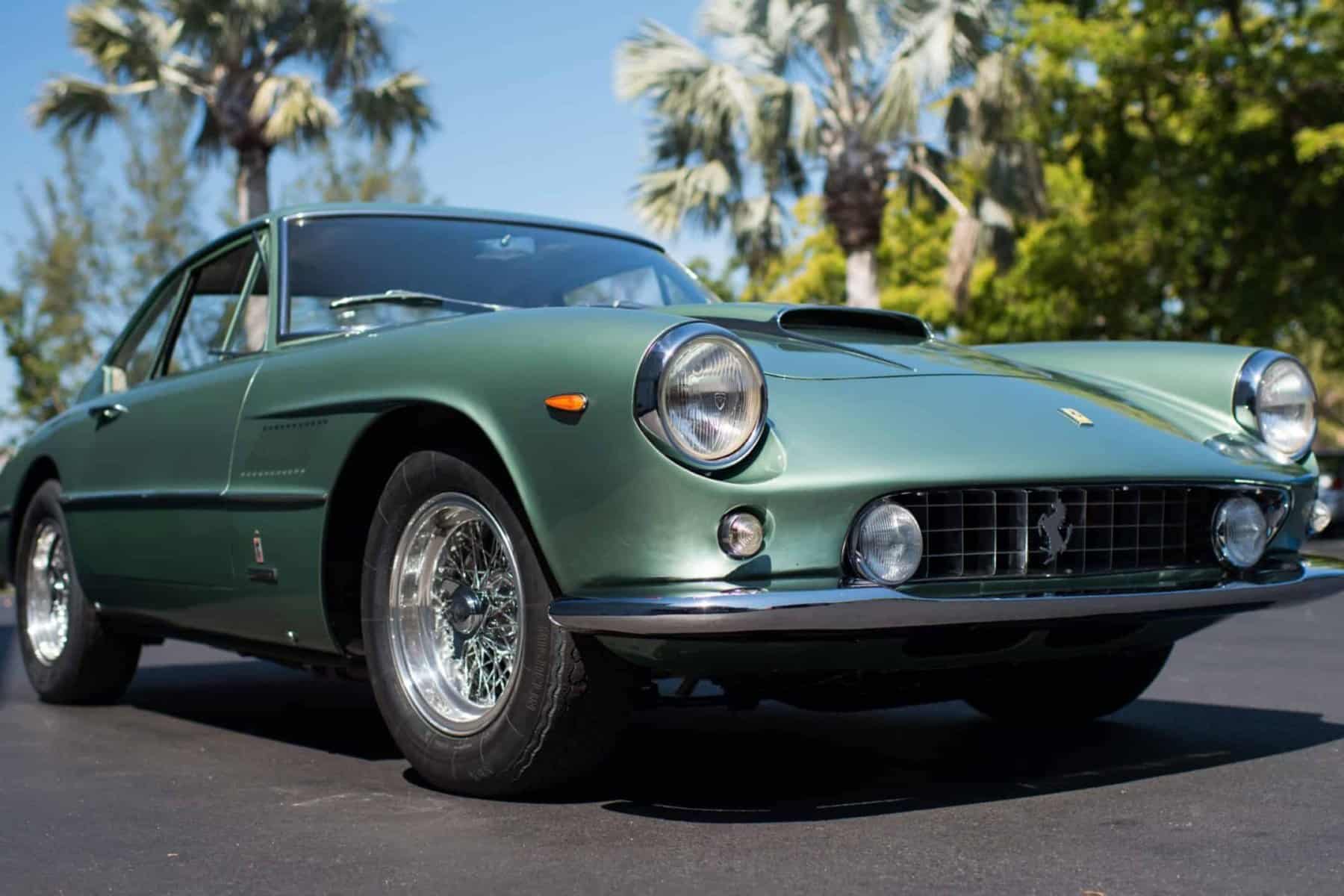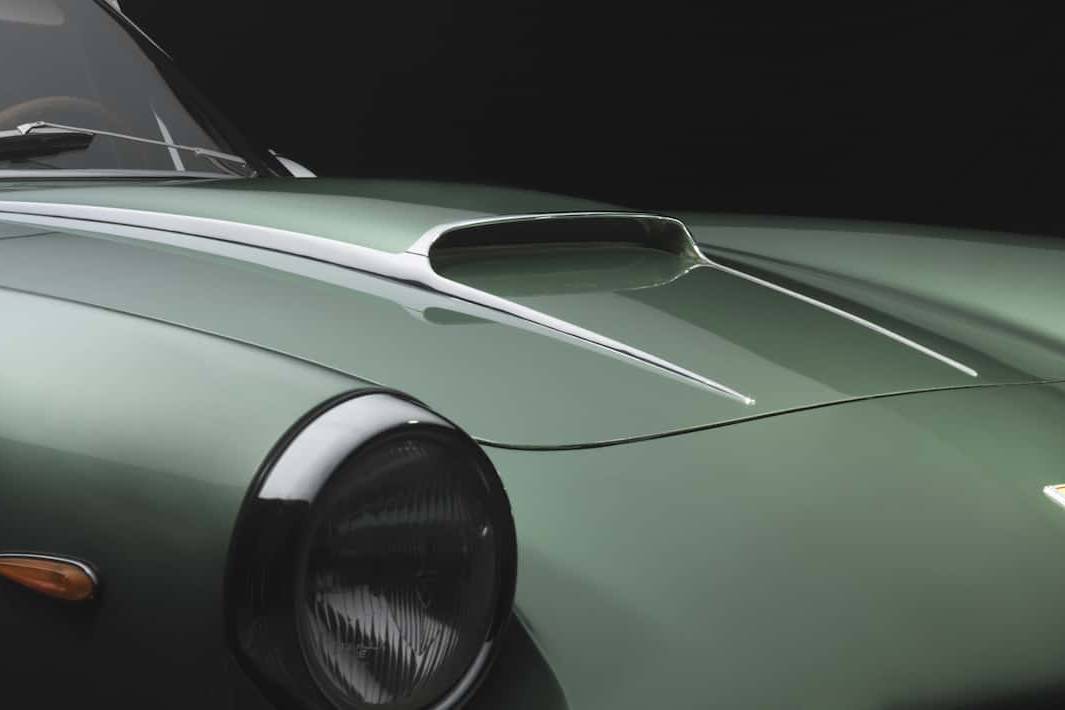René and the Beast – the Bugatti Type 53
What you’re looking at may appear to be a paradox
BY: JOHN LAMM
Looking like a bruiser, the big blue four-wheel-drive Bugatti Type 53 is hunkered against an unforgiving stone wall on the La Turbie hillclimb race course that leads to the Nice Observatory. Next to it is a slim, refined gentleman, René Dreyfus.
This photo was taken in 1983, and Dreyfus, then 78, was a famed New York restaurateur with a gentle, welcoming manner and a history as a winning race driver — one who angered Adolf Hitler.

That came in 1938 when Dreyfus — a Jew — drove a Delahaye 145 entered by Ecurie Bleue (the same team that once owned the Maserati 8CTF that’s now in Miles Collier Collections at Revs Institute in Naples, Florida). He beat a W-154 race cars entered by the Nazi-backed Mercedes-Benz team at Pau, France. The young Frenchman was already an established winner, with grand prix victories at Monaco in 1930 and Belgium in 1934, both in Bugattis. He also raced Maseratis and Alfa Romeos, the latter for Enzo Ferrari’s pre-war scuderia.

So what was the connection between the gentleman and the beast? When that picture was taken, we had recently been at the Grand Prix de Lausanne, a celebration of vintage race cars at which René demonstrated the Type 53. After that event, we traveled to his native Nice to join the car and driver at the site of one of his famous wins.
In the decades between the wars, Bugattis – built in Molsheim, France — were the essence of mechanical finesse, with nearly every component a beautiful example of the machinist’s art (emphasis on the “art”). Bugatti grand prix cars, with their distinctive horseshoe-shaped radiator shells, were light and precise cars to drive.

But there are exceptions to every rule, and Bugatti’s was the Type 53.
There was good reason for the four-wheel-drive experiment. By 1930, Bugatti’s five-liter straight-8 was capable of 300 horsepower in competition form, powering a car weighing around 2,000 pounds. Remember: This was back when shock absorbers used friction instead of fluid, automobile axles were beams, and the width of your palm covered the tread of a race tire. Imagine, then, 300 horsepower . . . on a wet road in a car that light.
So Ettore Bugatti and his son, Jean, were willing to try a four-wheel-drive race car. Seventy-five horsepower apiece for four wheels seemed a better proposition than 150 for two. The Italian engineer Antoine Pichetto designed the Type 53, and The Autocar magazine proclaimed it “One of the Most Remarkable Racing Car Developments of Recent Years.”

It doesn’t look like a product from Molsheim, having bulk instead of the usual Bugatti grace. The car did have a grille that was technically horseshoe-shaped, but it lacked the distinctive brass/chrome radiator that became the visual trademark of the more well-known Type 35s and Type 57s. Inside the four-wheel-drive Type 53 was a Type 50 engine with twin camshafts, and an elongated barrel-shape Roots supercharger. The actual engine from the Dreyfus former racer came from a Type 50 that crashed at Le Mans in 1931. The four-speed gearbox is below the driver’s knees.

Four-wheel-drive is common today, but Pichetto was dealing with new territory in 1932. The Type 53’s driveline has three differentials — front, rear, central — a new design to the company.
The Type 53’s unusual drivetrain is in a sturdy frame with a 102.2-inch wheelbase. While Bugatti bodies are generally lithe and aerodynamic, styling appears to have be an afterthought in the Type 53, with its heavily louvered hood, rudimentary seating area and huge fuel tank behind the driver.

The Type 53’s career began when Bugatti works driver Albert Divo gave up on it after practicing for the Monaco Grand Prix in April 1932. René, a spectator to the attempt, said: “We were very interested in what the Type 53 would do because at Bugatti, they thought it would be ideal for Monaco. The drivers didn’t like the car, but Divo being a strong man — broad shoulders, a tough man — Bugatti decided he should drive the 53. It was overheating — not just the engine, but the car and I think Divo having so much difficulty with the car, coming down into corners at Mirabeau and the station . . . very tough. He got out of the car exhausted.” Divo drove a Bugatti Type 51 in the race.
The following July, Jean Bugatti raced one of the cars at the Shelsley Walsh hillclimb in England. The next month, Louis Chiron and Achille Varzi swapped second- and third-place finishes with the pair of Type 53s at Germany’s Klausen and Frieburg hillclimbs. In September 1932 Divo was second with one of the four-wheel-drive cars, this time at the Mont Ventoux Hillclimb after which the cars were put in semi-retirement until Dreyfus had one revived. Here, René picks up the story:

“In 1934, we took the 53 to La Turbie, which was a few days before the Monaco Grand Prix. The other drivers said I was crazy. Even mechanics were telling me it was a difficult car to drive: ‘Why don’t you use the Type 59?’ But the Type 53 was more powerful, and I felt I could do better with the four-wheel-drive. I don’t think I made many practice climbs — maybe three or four — because I knew the climb so well. I liked the car and wanted to pass the famous average speed of 100 kilometers per hour. At the start of the race, I went the maximum and got an average of 100 kilometers per hour and the best time of the day.
“But I was tired as never before with all the other cars I raced at La Turbie. My shoulders were in bad shape, my arms and my back were tight. It was partially because the car was so powerful, and also because of the tension of knowing I had a car that had to be driven differently than the others. You had to very accurately aim the Type 53 at each corner, and you could not drift the car. So I was very pleased, but I was also very tired. It was a relief to drive the Type 59 a few days later at Monaco for the GP [where he finished third].”

Talking with René in 1983, it was difficult to reconcile this sophisticated gentleman with the blunt, brutal Type 53. A paradox. Those of us who had enjoyed his restaurant Le Chanteclair in Manhattan always remember the warmth and grace of the man as he welcomed us.
While we traveled through France, René started each day by referring to the Michelin Guide to determine where we would be lunching. He was quickly recognized everywhere. At the three-star Les Freres Troisgros near Lyon, we weren’t even allowed menus — there must be a special meal for the driver known as the champion of France.
We were headed to dinner in Monaco one night and René, immaculately dressed in a pinstripe double-breasted suit, said to me: “John, I am ready. I have my passport, my wallet and my cigarette lighter.”
“But René, you don’t smoke.”
“No, but the lady next to me might.”
I didn’t learn those manners growing up in Wisconsin.
As we were taking photos of the Type 53 and René at near the Nice observatory, a white Renault rushed up. Its driver jumped out. Was he was going to throw us out of this beautiful, historic location?
No. Instead, his eyes lit up; he exclaimed, “René Dreyfus,” and then rattled on in excited French. He’d been a small boy at the time, but he remembered René, the Type 53 and the day they won at La Turbie. The man’s father had been in charge of the observatory and would sit atop the building during the hillclimbs to blow a horn to alert the crowd when he could see the race cars approaching. Now the son worked there.
Throw us out? I think if René had asked the man to move the huge stone building 10 feet to the left for a better photo, he would have happily obliged.




